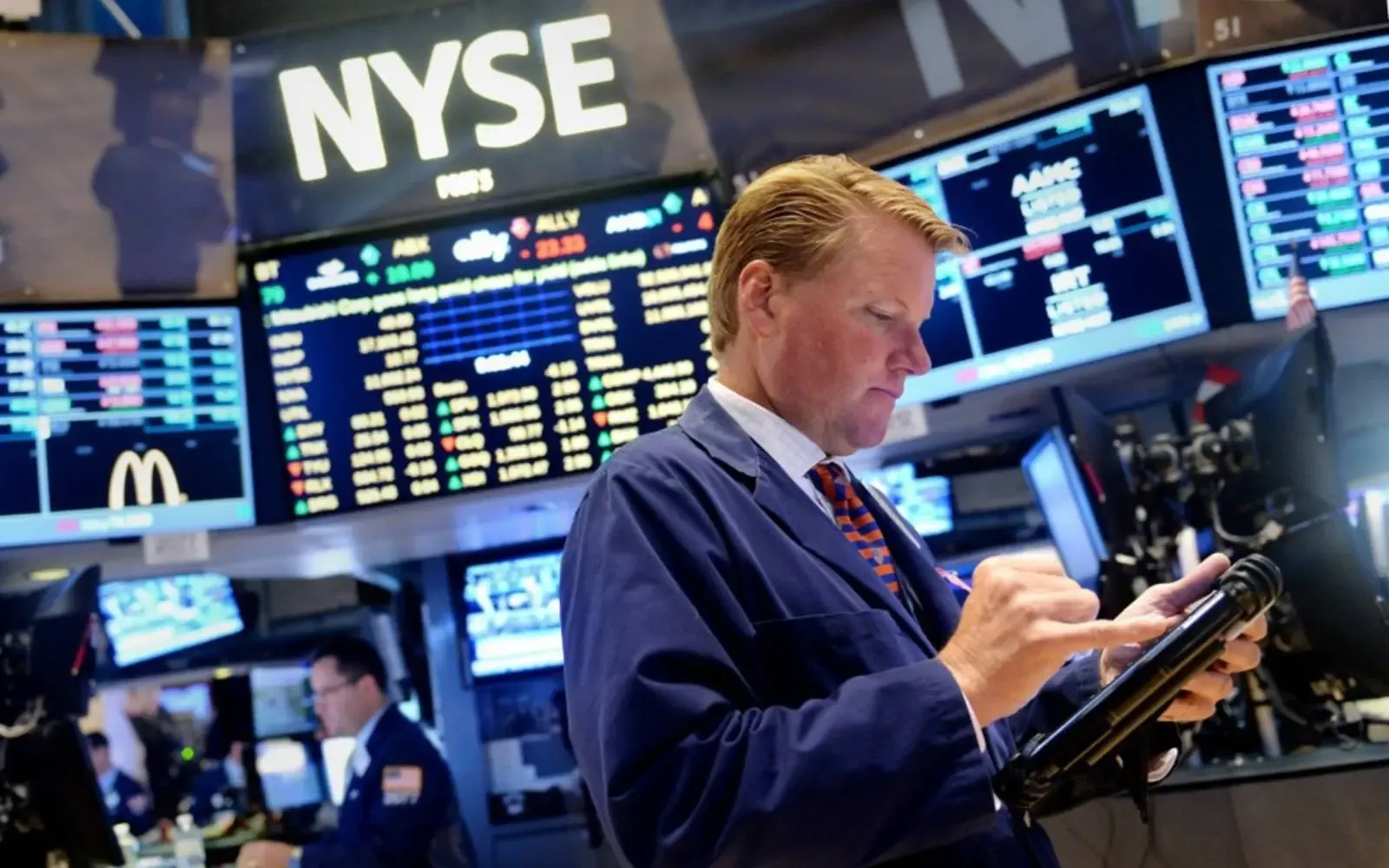

Банки снижают прогнозы по S&P 500 и повышают оценки вероятности рецессии. Как это воспринимать инвесторам
7 апреля 2025
Экономика
7 апреля 2025
Пересмотр прогнозов аналитиками
В последние недели аналитики активно пересматривают свои прогнозы по американскому рынку. Еще 1 апреля три самых уверенных «быка» Уолл-стрит признали, что были слишком оптимистичны в прогнозах по американскому рынку: Goldman Sachs, Societe Generale и Yardeni Research начали второй квартал с понижения целевых показателей S&P 500 на конец года. Для Goldman и Yardeni это было второе снижение менее чем за месяц.
После того как Дональд Трамп в среду, 2 апреля, объявил о масштабных пошлинах, банки повышают оценки вероятности рецессии в США. Goldman увеличил прогноз с 35% до 45% (против среднего исторического показателя в 15%) в течение следующих 12 месяцев: J.P. Morgan — с 40% до 60% до конца года. В выходные Evercore ISI присоединилась к другим фирмам с Уолл-стрит, снизив свой прогноз с 6 800 пунктов до 5 600. О том, как относиться к таким прогнозам и оценкам, рассказывает Еуджениу Кирэу, советник фонда ARGO.

Инвестиционные банки пересматривают свои оценки, реагируя на смену настроений инвесторов. В большей степени они фиксируют текущие настроения, а не дают объективную оценку будущего.
Смена этих настроений не беспочвенна. Введенные пошлины оказались выше, чем ожидалось, и затронули практически всех торговых партнеров США. Это должно привести к подорожанию товаров для американских потребителей и снижению их доступности. Иными словами, произойдет сокращение совокупного предложения, что, в свою очередь, означает более медленный рост ВВП и более высокие цены. С другой стороны, коррекция цен рисковых активов вместе с ожидаемым сокращением госрасходов и дефицита бюджета США должны привести к падению совокупного спроса. Это, скорее всего, ослабит совокупный спрос, что также негативно скажется на росте ВВП, но поспособствует снижению инфляции.
Как следствие, и те и другие факторы замедлят экономический рост или приведут к рецессии. Влияние на цены остается неопределенным и будет зависеть от масштаба политических и рыночных процессов, а также способности экономики адаптироваться под изменившиеся условия. Мы предупреждали об этих тенденциях еще до введения пошлин и резкого падения рынков. Сейчас мы лишь констатируем, что это реализовалось — и в большей степени, чем предполагал консенсус-прогноз.
На этом фоне вполне логичен рост ожиданий рецессии. Принятые меры и реакция рынков указывают на то, что потребление, инвестиции и госрасходы должны снизиться. Насколько серьезным будет сокращение, — не берется предсказать даже ФРС. Пример Вьетнама говорит о том, что многие партнеры США, вероятно, смогут договориться об улучшении торговых условий. Мы также знаем, что важной частью экономической политики администрации США является снижение налогов. Это может смягчить негативный эффект пошлин и падения спроса. Иначе говоря, неопределенность относительно будущего очень высока, а падение рынков еще недостаточно глубокое, чтобы компенсировать последствия накопленного оптимизма, толкавшего рынки вверх последние два года.
Оценка переоцененности рынка
Даже с учетом прошедшей на прошлой неделе коррекции американский рынок акций остается дорогим относительно доходности безрисковых активов. Прогнозировать уровень S&P 500 или Nasdaq 100 к концу года — чистая спекуляция. Но сравнение текущих фундаментальных показателей с историческими данными может быть полезно для понимания общего уровня переоцененности.
После Второй мировой войны прибыль на акцию для компаний из S&P 500 росла в среднем на 6% в год. Этот тренд остается устойчивым и в последние десятилетия. Сейчас прибыль на акцию примерно на 22% выше этого тренда. Это результат монетарных и фискальных стимулов последних лет, усиленных оптимизмом вокруг технологий ИИ и эффектом роста стоимости инвестиций. История показывает, что в периоды рецессий прибыль на акцию обычно проседала — и не просто снижалась до долгосрочного тренда, но нередко опускалась ниже. Кроме того, в спокойные периоды инвесторы обычно требуют дополнительную доходность в 2–3% годовых сверх безрисковой ставки и темпа роста прибыли компаний — так называемую премию за риск инвестиций в акции. Сейчас эта премия составляет –0,14%. Это, конечно, выше уровня в –1,9%, наблюдавшегося во второй половине прошлого года, но все еще говорит о готовности инвесторов жертвовать долгосрочной ожидаемой доходностью ради краткосрочной спекуляции.
Гипотетический сценарий рецессии
Рассмотрим гипотетический сценарий, при котором рецессия все же наступит. В этом случае прибыль компаний может снизиться до уровней, соответствующих уровню среднего темпа роста в 6%, то есть упасть на 22% от текущего значения. Одновременно с этим, скорее всего, спадет спекулятивный оптимизм, и премия за риск вернется хотя бы к уровню 2%. ФРС окажется перед непростым выбором между поддержкой экономики и недопущением роста долгосрочной инфляции на фоне возросших пошлин. Это означает, что реальная процентная ставка, вероятнее всего, будет низкой, но едва ли отрицательной. Иными словами, ожидать ставку и инфляцию на уровне 2,5% было бы разумно.
Ни одно из этих допущений нельзя назвать чрезмерно пессимистичным или катастрофическим. Однако результат расчета индекса S&P 500 при таких допущениях для многих может быть ошеломляющим: его уровень составляет примерно 3 850 пунктов. Это на 37% ниже пиков прошлого года и на 24% ниже текущих уровней. Конечно, возможны менее жесткие сценарии. Также есть и вполне реалистичные сценарии, ведущие к еще более серьезной просадке. Иными словами, рынок еще недавно был настолько перегрет, что для возврата к нормальному состоянию может потребоваться коррекция, обычно относимая к кризисным периодам. Как альтернатива, это также может быть долгий период очень низкого роста.
Напомним: такие расчеты — не прогноз. Это лишь полезное упражнение для оценки возможных сценариев. Оптимизм может вернуться. Но для его реализации требуется дополнительный капитал. Повышенная инфляция и возможная рецессия могут ограничить возможности для спекулятивной активности частных инвесторов, что снижает такой риск. Как именно изменятся упомянутые факторы в течение года — не знает никто. Если рецессия все же наступит, это точно не поддержит цены рисковых активов. Важнее то, что для их снижения рецессия необязательна. С этой точки зрения попытки оценивать вероятность рецессии — инструмент сомнительной полезности для инвестора.
Поделиться



